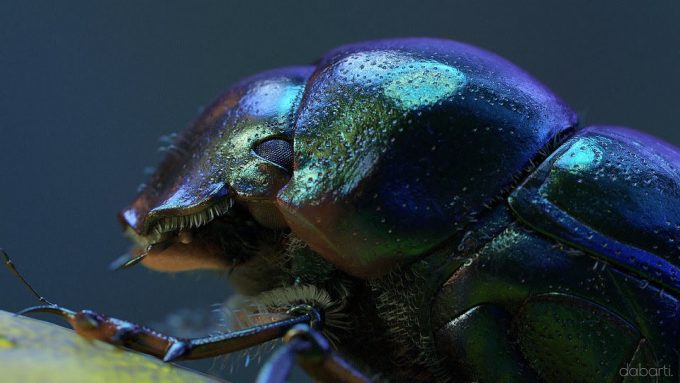- Qualcomm Launches Snapdragon 4 Gen 2 Mobile Platform
- AMD Launches Ryzen PRO 7000 Series Mobile & Desktop Platform
- Intel Launches Sleek Single-Slot Arc Pro A60 Workstation Graphics Card
- NVIDIA Announces Latest Ada Lovelace Additions: GeForce RTX 4060 Ti & RTX 4060
- Maxon Redshift With AMD Radeon GPU Rendering Support Now Available
Chaos Group To Debut “Over 80% Faster” V-Ray GPU Rendering Architecture At GTC 2018
Chaos Group’s V-Ray renderer has become a de facto option over the years, both with its ADV CPU-bound and RT GPU-bound options. Soon, that latter option is going to get a whole lot better. In fact, that’s so much the case, that a name-change is in the cards: “V-Ray GPU”. It’s not the most exciting name, but it’s certainly apt.
But this announcement is more than a name-change; it’s the introduction of a brand-new rendering architecture. The claim is that we will be able to see speed improvements of up to 80%, which is simply staggering. This was based on a system equipped with NVIDIA’s TITAN V, and since the GPU was the target, the CPU chosen was pretty modest (in that an i7-7700K costs about 10% a TITAN V).
Ultimately, Chaos lays out five features that designers should look forward to:
- Volume Rendering – Fog, smoke and fire can be rendered with the speed of V-Ray GPU. Compatible with V-Ray Volume Grid which supports OpenVDB, Field3D and Phoenix FD volume caches.
- Adaptive Dome Light – Cleaner image-based lighting is now faster and even more accurate.
- V-Ray Denoising – GPU-accelerated denoising across render elements and animations.
- NVIDIA AI Denoiser – Fast, real-time denoising based on NVIDIA OptiX AI-accelerated denoising technology.
- Interface Support – Instant filtering of GPU-supported features always lets artists know what’s available in V-Ray GPU (starting within 3ds Max).
A denoiser in V-Ray isn’t new (this one is an overhaul), but a complement in the form of an AI-based denoiser sure is. This is the first confirmation I can personally recall seeing NVIDIA’s OptiX-based AI denoiser being implemented into a commercial product, and it’s one feature I’m really looking forward to testing out.
All of these features represent two years of dedicated R&D at Chaos, and those five things above are just the start. There’s also a new hair shader with melanin color control and better highlights (more here), a switch material tool that lets you test different materials quickly and easily, an auto exposure and white balance tool, and more.
If you’re a Chaos Group customer with access to V-Ray 3.x for 3ds Max, you can go here and join the beta. Yes… you can take advantage of this new plugin right now. Just don’t expect a problem-free experience; it’s called “beta” for a reason. On another note, if you’re wasting no time jumping on the latest version of 3ds Max (2019) released earlier today, Chaos has already got you covered for a supporting V-Ray plugin. You just need to hit up the downloads page and snag it.
If you’ll be at NVIDIA’s GPU Technology Conference next week, you can attend Chaos’ Future of GPU Rendering talk at 9:00AM on March 28, and Interactive and Production Rendering with V-Ray GPU at 11:00AM on the same day. Both presentations are being held in the same room (230B).





